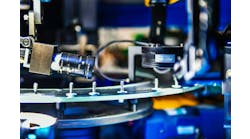Intelligent machine vision could be the next step of evolution for robots
Of all the senses, vision has to be my favorite. The ability to see allows us to control and manipulate our environment. Heck, without vision, we wouldn’t even know what our environment looks like or be able to enjoy the visual splendor of the control and manipulation that we exercise over it. Vision is power.
More than 500 million years ago, flatworms developed photosensitive pit eyes, and the evolutionary race to improved vision was off and running. Long before dinosaurs stomped around the planet, trilobites became the first creatures to develop complex, compound eyes in the Cambrian Period of the Paleozoic Era.
These trilobites existed for more than 270 million years. That’s right. More than 270 million years before they went extinct. By comparison, Homo sapiens have existed for little more than 100,000 years.
One of the trilobite’s primary defense mechanisms besides exoskeletons and the ability to burrow into sediment was the sense of sight. Being able to sense motion via stereoscopic vision allowed trilobites to see predators and thus avoid them.
Evolution is a funny thing. For the most part, it advances a species’ ability to survive and thrive. And, as robots begin to take their collaborative place next to Homo sapiens, intelligence and sensing capabilities continue to evolve just as fast. Components with Ethernet connectivity allow robots to communicate by sharing data and then actuate based on algorithms. The critical part of the equation is collecting and filtering the data.
Even though the overwhelming amount of data can stress a network and require additional processing and storage capacity, this same issue has driven the development of intelligent cameras, which can filter the data in real time, deciding what’s important or relevant to the algorithm and what can be discarded. With an embedded vision chip, a camera puts intelligence at the edge and gives robots the ability to see, think and act, just like their human counterparts.
Machine vision has already found its way deep into automotive and electronic equipment manufacturing and assembly, pharmaceutical and chemical processing, as well as packaging machinery, but robotic guidance is the sweet spot for its future development. With new grippers and end effectors coming to market weekly, there seems to be no end to the applications that can benefit from robotic vision. And, where system integrators once were the sole providers of expertise that could join the power of robotic motion with visual recognition, many robots now come with their own embedded vision systems, and this combination should become ubiquitous in a short period of time. It would seem that robots no longer need us to help them to see, think or act. What’ll they think of next?
Mike Bacidore is the editor in chief for Control Design magazine. He is an award-winning columnist, earning a Gold Regional Award and a Silver National Award from the American Society of Business Publication Editors. Email him at [email protected].






